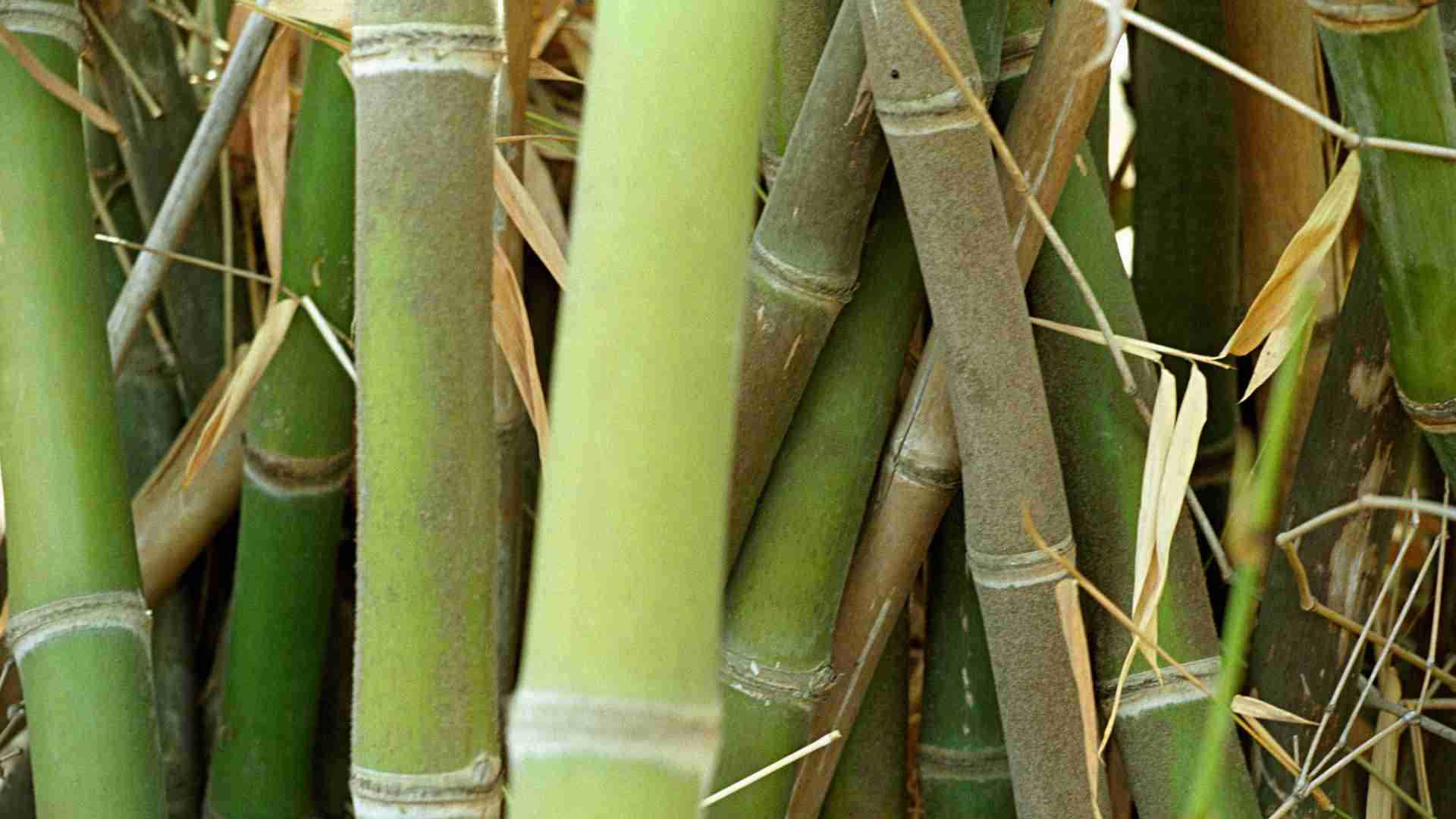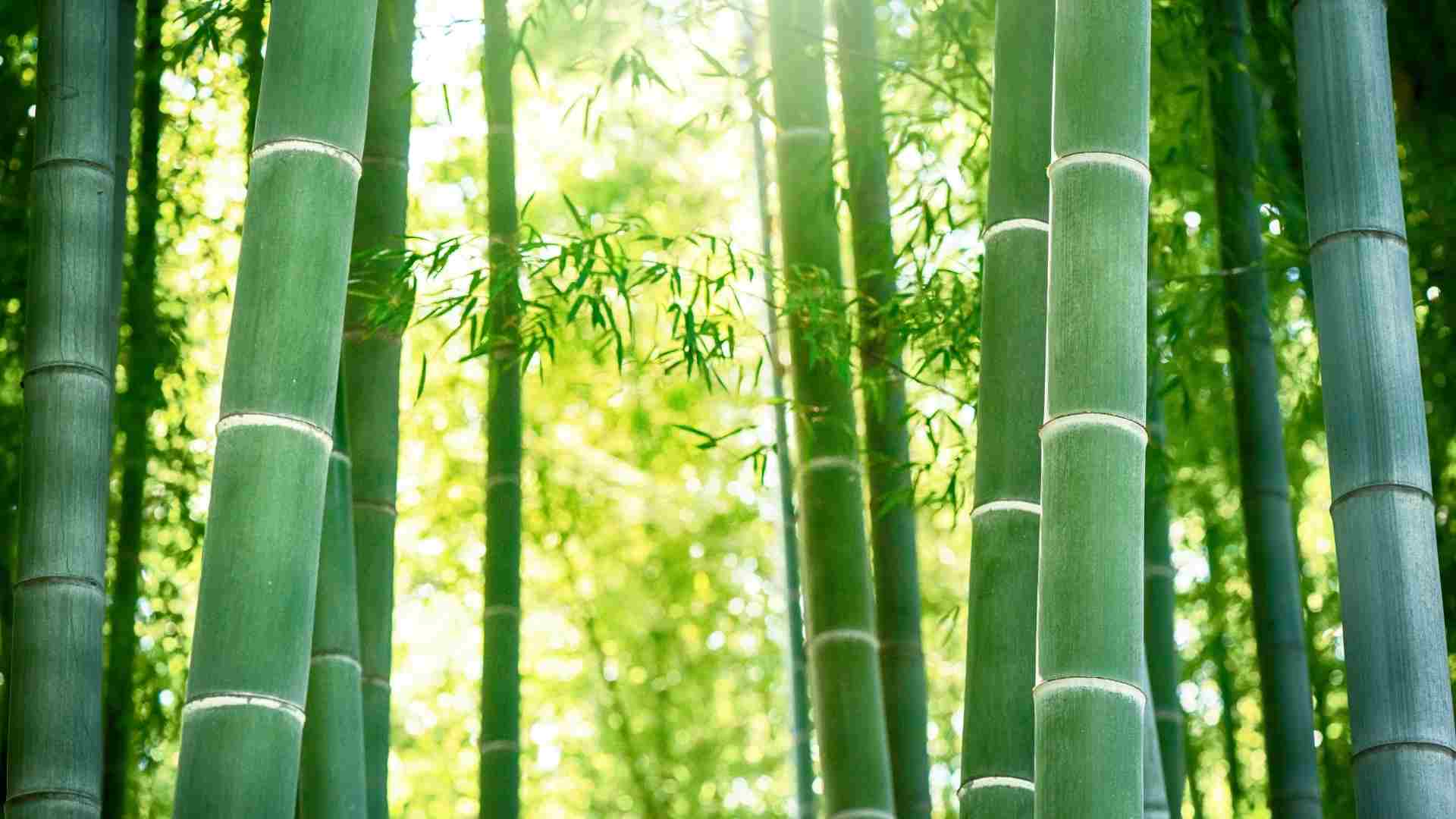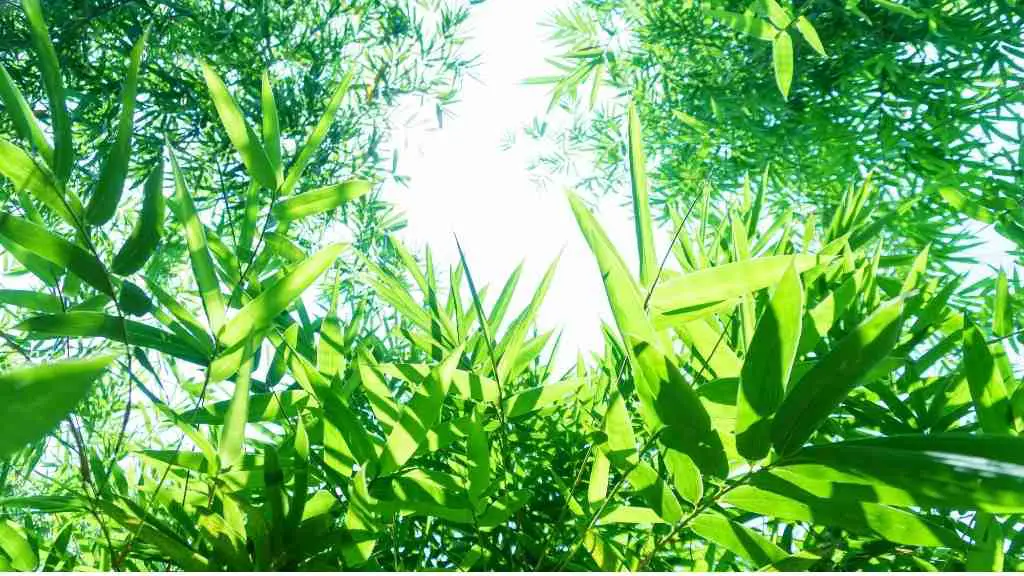Choosing the best bamboo can be a serious challenge. For the beginner, the vast array of bamboo options may be overwhelming. Indeed, authors and botanists have recorded more than 1,400 species and cultivars. Luckily, even a bamboo specialty nursery is unlikely to have more than 100 varieties to choose from. Still, a lot of customers end up going home empty-handed, stricken by analysis paralysis, aka electile dysfunction.
Instead of trying to decide what’s best, a newbie might just look to see what everyone else is doing. So, you might ask, what is the most popular variety of bamboo?
Many botanists and bamboo experts claim that Bambusa oldhamii is the most widely grown bamboo species in North America. Others will point to Bambusa vulgaris, also known as common bamboo, which spread across the globe during the 1800s and now flourishes in tropical regions all across South Asia, Africa, and Latin America. Then there’s Golden Bamboo, Phyllostachys aurea, that mid-sized, indestructible bamboo that proliferates throughout the temperate parks and gardens of the United States and Europe.
NOTE: This article first appeared in June 2020, last updated in March 2023.
The popularity of Bambusa oldhamii
There are several criteria that go into selecting a species of bamboo for a private garden or a landscaping project. But there are at least three or four characteristics that have made Bambusa oldhamii such a popular bamboo variety in America.
Clumping bamboo
Given the choice between running bamboo and clumping bamboo, most gardeners prefer to plant clumpers. Running bamboo has earned a pretty bad reputation for the way it spreads and takes over lawns and gardens, often choking out other ornamental plants. Once the tenacious rhizome roots of a running bamboo establish themselves, they can be almost impossible to remove. In some cases, running bamboos make more sense, when filling out a large area quickly, for example, but many suburban gardeners find the aggressive growth habit intimidating. (And in fact, there are a number of ways to contain and tame this formidable beast.)
Clumping bamboos, on the other hand, behave differently, with another type of rhizomes that spread more slowly and eventually stop spreading when the plant reaches a certain size. This allows the ordinary gardener to keep a clumping bamboo like Oldham’s in a well-defined area, without disrupting the rest of the landscape or creeping into the neighbor’s well-manicured flower bed next door.
At the same time, it’s somewhat surprising that a clumping bamboo grows more widely than any runners. After all, the running bamboos grow so quickly and are very easy to propagate. Consequently, they are considerably less expensive to purchase from nurseries and garden centers. But the fact that humans have helped it to surpass so many running species of bamboo is a real testament to the desirability of oldhamii.
Timber bamboo
If you want some impressive greenery in your garden, few plants can match the grandeur of a giant timber bamboo. In good conditions, Oldham’s can easily grow more than 50 feet tall with culms up to 4 inches in diameter. The poles of this species are tall, straight and elegant. Furthermore, the wood is thick and makes a beautiful building material.
It’s not easy to find a bamboo variety that gets so tall and spectacular without also spreading out and taking over the landscape. In other words, the combination of clumping roots and timber stature make Bambusa oldhammi an especially appealing and popular variety of bamboo. It’s particularly interesting for those who want to dazzle their neighbors without overrunning their gardens.
Temperate bamboo
Although native to the subtropical climes of Taiwan, Bambusa oldhamii also does quite well in the temperate climate zones of Europe and North America. It’s not the most cold-hardy of all bamboos, but Oldham’s will survive down to around 20 degrees Fahrenheit, which is pretty hardy for a clumping bamboo.
The most cold-hardy bamboos tend to be running species, like members of the genus Phyllostachys. Phyllostachys are native to the cooler and more mountainous parts of China and can often survive sub-zero winters. This makes them especially popular in places like Germany or Canada, which we don’t generally associate with bamboo. Oldham’s won’t do well in those climates, but it does enjoy a pretty wide range of habitats.
Dense foliage
Rounding out the list of desirable characteristics, Oldham’s is not only tall, regal, hardy and well-contained, but it’s also bursting with attractive greenery. The leaves of this species tend to be long and wide, growing densely between the majestic culms of the towering bamboo. From the base of the plant all the way to its great heights, oldhamii is packed with lush foliage. In addition to looking very pretty in the garden, it can also provide some comforting privacy as well as some excellent nesting area for avian wildlife.
Common bamboo: The vernacular variety
It might not be so popular in the gardens of America, but the scientific name of the species Bambusa vulgaris literally means common bamboo. It probably originated in Southern China or Taiwan, but now it’s widespread through Asia and the Pacific Islands, as well as Africa, South America and the Caribbean.

The species called vulgaris could also be called vigorous. Although clumping, it has a robust growth habit, so it grows quickly and is easy to propagate. As a subtropical bamboo, however, it requires a fairly warm climate where frost is rare. For Americans, that means you probably need to be in Florida, Texas or Southern California to grow this variety with any success.
The main benefits of common bamboo are its clumping habit, its ease of maintenance, and its strong poles. But compared to Oldham’s, above, it’s not quite as attractive.
Golden bamboo: Prolific and ubiquitous
If you live someplace where snow and frost are common, then subtropicals like B. vulgaris and B. oldhamii are not going to be popular options at all. You’re more likely to see temperate, running bamboos of the genus Phyllostachys. Among these, P. aurea, or Golden Bamboo, is perhaps the most frequently spotted bamboo species in residential gardens and in front of Asian restaurants.
This is one of the easiest bamboo varieties to maintain and propagate, and so it’s very popular among nurseries and gardeners. Culms only get an inch or so in diameter, and usually no more than 20 feet tall. But they have a nice buttery yellow color, hence the name, and a generous quantity of foliage. They also do fairly well in larger containers. I see them all the time planted in half barrels in front of Thai restaurants and Sushi joints.
Golden Bamboo is also extremely popular as a living fence or a privacy screen. That’s because they grow quickly with thick greenery. But watch out, what begins as a privacy hedge can easily spread into something of a menace. Before you plant Phyllostachys aurea, be sure to use a rhizome barrier, dig a trench, or have some other containment strategy. You don’t want this running bamboo to run amok and create animosity with your neighbors.
Moso bamboo: Another runner up
Another of the world’s most popular bamboo varieties is Phyllostachys edulis, or Moso bamboo, a running timber bamboo from southern China. Its domineering stature and rapid growth habit make this a fun variety, especially for those with plenty of space to spread out, and who aren’t intimidated by an aggressive running bamboo. Moreover, Moso bamboo is the most widely grown bamboo for commercial purposes. Moso is the raw material for all bamboo clothing, bamboo flooring, and a wide range of crafts and construction products.

Despite the incomparable utility and versatility of Moso bamboo, it’s not such a great choice as an ornamental variety. That’s not because it isn’t extremely attractive. Its towering, upright poles are most impressive. But Moso is a finicky species, and most gardeners in the US report great difficulty in getting this bamboo established. It won’t do nearly as well as it does in China. Americans have far greater success with species like Madake (Phyllostachys bambusoides) and Henon.
Bambusa oldhamii: King of clumpers
In some ways, it’s pretty surprising that an obscure variety of bamboo discovered in Taiwan in the 1860s by the unfortunate British botanist and collector Richard Oldham should become one of the most widely grown bamboo species in North America. (On his adventures through Asia and Japan, Oldham contracted smallpox, rheumatism and neuralgia, and ultimately died of dysentery at the age of 27.)
In other ways, it’s clear that Bambusa oldhamii has everything it takes to earn a big thumbs up from the legions of green-thumbed gardening enthusiasts around the globe. Tall, dark and handsome, while at the same time easy to maintain and cultivate, Oldham’s is something like a bamboo lover’s dream come true.
Further reading
Of course, there are over a thousand other bamboo species to learn about, and maybe about a hundred worthwhile ornamentals to consider. Bambusa oldhamii is a manageable beauty, but it isn’t the one-size-fits-all solution for every gardening scenario. And Phyllostachys aurea might well survive under any and all growing conditions, but that doesn’t necessarily mean you should plant it in your yard.
Take a look at some of our other articles to help select the best bamboo for your various purposes. And please consider subscribing to our blog for more great articles about the uses and cultivation of this incredible plant.


























Hello,
How are you? I read that the Oldhamii Bamboo can grows up to 60 feet within five years because it can grow approximately 10-15 feet per year. Is that correct? I am trying to get all the information I can on the Oldhamii for planting. Thank you:)
No, it’s not like that, because bamboo is a grass. The poles (culms) reach their full height in a single growing season. So they get 60 feet tall in just 2 or 3 months. Amazing! The following year, new shoots will emerge, but the existing canes won’t grow any taller, just new leaves and branches.